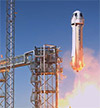Critical Location Decision Factor #6: Powering Up While Keeping Costs Down
While some operations are more energy-intensive than others, reducing energy costs is always an important consideration in the location decision.
Q4 / Fall 2013
Every development needs energy — it would be difficult to work in the dark. But how big a factor the availability and cost of energy is depends a lot on the kind of development.
“The two main types of projects most sensitive to energy costs and availability are data centers and manufacturing,” says Ginovus’ Managing Director Larry Gigerich. “Data centers tend to consume a lot of energy, whether they’re a single location or collocation. Not only [are they] cost-sensitive, but also having energy availability from multiple sources [is important]. Often the requirement is to have direct feeds from two different substations and transformers.”
While manufacturing operations also tend to take big gulps of energy, it’s not always electricity. In fact, says Gigerich, the plunge in natural gas costs has changed the playing field a bit. “In a lot of cases they’re trying to do more using natural gas as a part of the manufacturing process,” he explains.
In any case, energy is a big deal. “A few locations are really good and competitive for electric costs,” Gigerich says. The Mountain/West part of the country has been quite attractive for data centers, he points out, with the prevalence of hydro power a significant reason. “Those areas offer not only an abundance of energy but the price point is attractive.” Of course, many companies require data centers in more than one region. “If data centers are geographically dispersed, the Midwest is attractive,” Gigerich adds.
The U.S. Energy Information Administration’s most recent annual report shows industrial rates averaging the lowest in the West-South-Central States — Arkansas, Louisiana, Oklahoma, and Texas — followed closely by the Mountain States and the West-North-Central States ranging from the mountains in the west across toward Minnesota, Iowa, and Missouri. Industrial rates in the East-South-Central region that includes Tennessee, Kentucky, Alabama, and Mississippi are nearly as low, too.
Smart technology - in electrical grids and in building automation - can not only help reduce the frequency and damage of power failures, but also pay for itself quickly through reduced energy usage and cost. Dan Probst, Chairman of Energy and Sustainability Services, Jones Lang LaSalle Reducing Costs
For larger companies, there are ways to make energy cost less of an issue, even for sites in areas that tend to have higher energy costs, says John E. Robbins, co-founder and principal of Turner & Townsend Ferzan Robbins. “These days we’re dealing with a lot of clients having great success on the energy side by buying bulk power,” he explains. Power is still delivered by the local utility, but sourced through a national contract. “Companies well represented across the U.S. are able to bulk-buy their power needs at better rates. They’re able to really bundle their business across the country.”
And eBay’s new data center in South Jordan, Utah, offers an example of an additional twist. Utah already enjoys favorable electric rates, but the new center is employing fuel cells as a primary source of energy. It’s also connecting to a waste-heat recovery system that will generate power using the waste heat from the pipeline that delivers natural gas to the site. An indirect energy-related factor is the climate — while the site is subject to desert heat during summer days, it’s a generally cooler-than-average location, which means less energy used on cooling the racks and racks of servers. A relatively new General Motors data center in Michigan enjoys a similar energy-related benefit.
Green energy considerations also come into play at Google’s data center in Pryor, Oklahoma. Like Utah, it’s a location known for reasonable energy rates, but Google is buying the entire output of a Texas wind farm to help offset the power consumption of the Oklahoma center.
Project Announcements
LS Cable & System Expands Chesapeake, Virginia, Manufacturing Operations
12/22/2025
Anthro Energy Plans Louisville, Kentucky, Manufacturing Operations
12/22/2025
Novartis Expands Durham-Wake County North Carolina, Manufacturing Operations
12/21/2025
Momentous Expands Summit County, Utah, Operations
12/21/2025
Stryker Expands Salt Lake County, Utah, Operations
12/21/2025
Portal Space Systems Expands Bothell, Washington, Operations
12/21/2025
Most Read
-
The Workforce Bottleneck in America’s Manufacturing Revival
Q4 2025
-
Rethinking Local Governments Through Consolidation and Choice
Q3 2025
-
Lead with Facts, Land the Deal
Q3 2025
-
Investors Seek Shelter in Food-Focused Real Estate
Q3 2025
-
Tariff Shockwaves Hit the Industrial Sector
Q4 2025
-
America’s Aerospace Reboot
Q3 2025
-
The Permit Puzzle and the Path to Groundbreaking
Q3 2025



